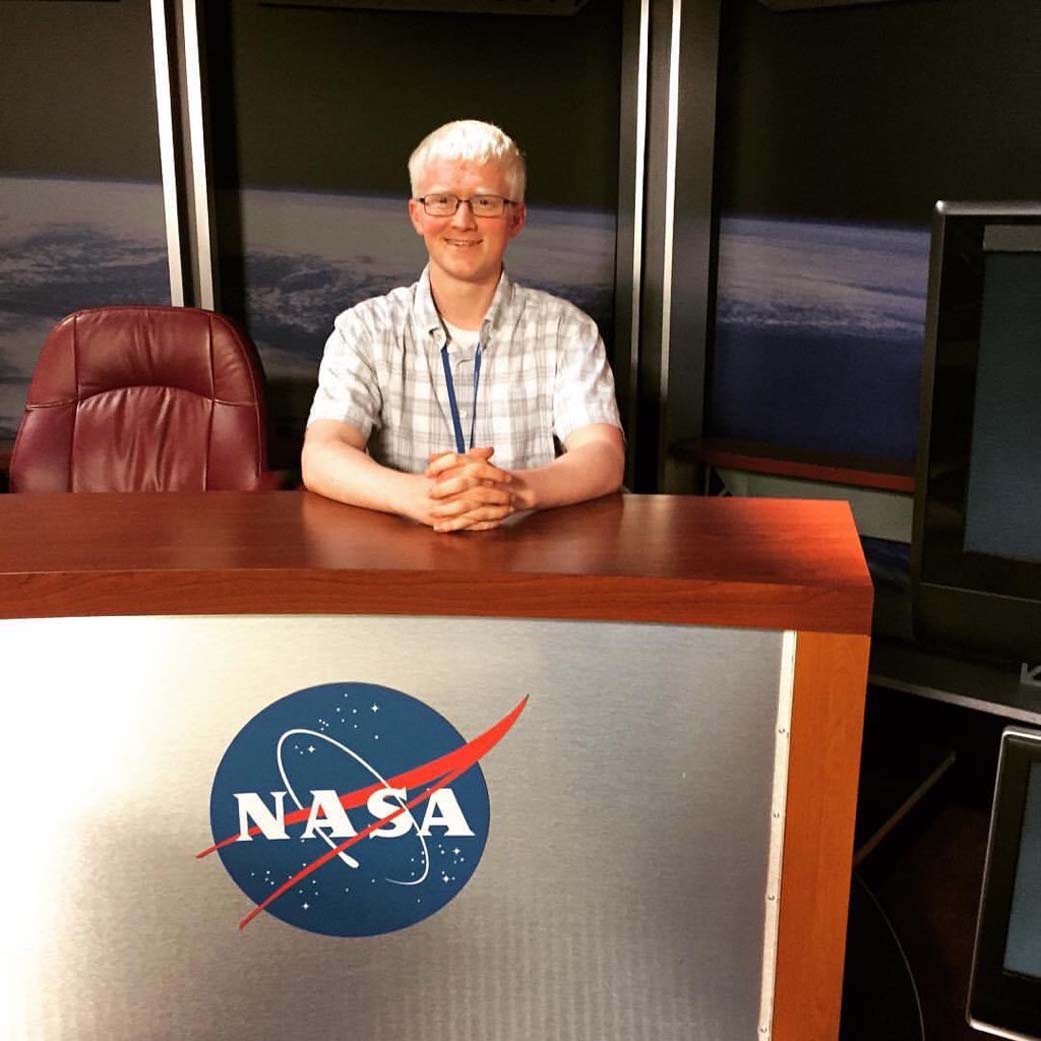Name: Daniel Battle
Formal Job Classification: Resources analyst
Organization: Code 155.1, National Oceanic and Atmospheric Administration Business Branch (NASA civil servant)
What do you do and what is most interesting about your role here at Goddard? How do you help support Goddard’s mission?
My job is to enable the technical workforce by allocating resources so they can do their job. On a daily basis, I assist in managing the finances for the Joint Polar Satellite System (JPSS), which is a weather satellite program based on a NOAA – NASA partnership. I am the resource analyst for the Ozone Mapping and Profiler Suite (OMPS) instrument and also provide programmatic financial analysis for JPSS program management.
I am also a co-chair for the Equal Accessibility Advisory Committee (EAAC). In this role, I help our advisory committee cultivate an inclusive workforce; specifically, for Goddard’s disabled community.
Why did you become a financial specialist?
I really fell in love with financial management when I was attending Hood College in Frederick, Maryland, for a dual major in business administration and economics. I was not very passionate about many other academic areas. However, I loved soccer; I was a National Collegiate Athletic Association (NCAA) soccer athlete at Hood. The connection between the two is that I really enjoy strategy, be it strategy in soccer or business. As a government agency, NASA relies on strategy to achieve mission and scientific success.
Where did you grow up?
I grew up in Poughkeepsie, New York, for half my childhood and then my family moved to Baltimore. I’m a mutt. I love NY-style pizza and I also love Maryland blue crab cakes.
My time in the two states made me appreciate both rural and urban surroundings, but I can’t say which state I prefer. If I had to choose, Frederick County would be my favorite region. It is one of the most charming areas in Maryland and I really appreciated spending my college days there.
How did you come to Goddard?
I was a pathways intern. During my senior year at Hood, I applied to the pathways program and was accepted. I began interning at JPSS the last part of my college days and, upon graduating, went to work with JPSS full-time where I remain today. The pathways program ensured that I received the proper training and experience to be successful at Goddard.
My first day at Goddard was in late January 2016, the day we got about 30 inches of snow. Goddard was closed that day, so I technically began the following day.
Are you currently in any other educational program at Goddard?
Yes, I am in the Academic Investment for Mission Success (AIMS) Program. AIMS funds all levels of education and they helped me attend American University for a master’s in business administration. I graduated in May.
How do you prioritize a project’s financial needs?
It comes down to working closely with our technical experts, learning the things they need to address and then prioritizing those needs. A simple example islooking at the expected launch date and figuring out how to get there.
Why did you decide to be a co-chair for the EAAC?
I have so much fun at work that I want to do whatever I can to make others feel the same way. I feel included and welcomed at Goddard, so I aim to bring that same energy and feeling to the Goddard community. I have a low-eye vision disability. I am interested in how I can help those with disabilities at Goddard. After learning more about the EAAC, I realized this AC would give me that platform.
I joined in the EAAC in July 2019 and became a co-chair in August 2019. EAAC needed help and I wanted to help them.
What are you goals for the EAAC?
I want to increase our membership and raise more awareness about what we can do for the disabled community. I also want our advisory committee to become more familiar with the issues the disabled community faces. Our group is trying to become better advocates by understanding what issues are currently affecting the community and who can we work with to address those issues.
We are also interested in planning retreats where our entire committee can get together for a day to come together and discuss what we want to achieve. We also want to figure out what is and is not working well for our group.
How does the Equal Opportunity Program Office (EOPO) help the EAAC?
We work hand in hand with the EOPO. Their disability program manager is a part of our committee and is a vital part of our team. We coordinate events and address issues together.
What is the EAAC’s communication structure?
Once a month, the EAAC meets to plan and strategize how to resolve situations affecting our community as well as ways to promote our community. We also attend the center’s Diversity & Inclusion Committee meetings.
The EAAC also will meet with the center director to review accomplishments over the past year and identify challenges and goals for the next year. We are very appreciative of the center director’s support; he is one of our champions.
Can you please tell us about the EAAC’s outreach events?
October is National Disabled Employment Awareness Month. To celebrate, we run events every October with the EOPO. Last year, we had tours of Goddard’s assistive technology laboratory and brought in a guest speaker who spoke in part about service dog etiquette. It was very informative and helped the Goddard community better understand how to approach service dogs.
What do you do to relax?
I still really enjoy playing soccer and currently play, when I have time, in the Goddard Soccer League. I’m on the gold team. Go, Gold!
By Elizabeth M. Jarrell
NASA Goddard Space Flight Center





























